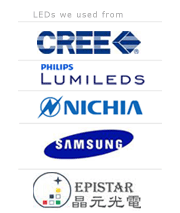News
Search
Popular search



A new uniform and flexible solder-pad design for LED boards enables customers to use two different LED types together, which simplifies second sourcing.
Osram Opto Semiconductors has developed a new solder pad design that enables two different LED types to be accommodated on a single circuit board.
The uniform solder pad design, which accommodates ceramic LED components such as Osram’s Oslon series, makes it easier for customers to use LEDs from different manufacturers. By facilitating second sourcing, this reduces the costs of storage and process modifications for the customer.
Christian Gärtner, Oslon Project Manager in Product Development, General Lighting at Osram Opto Semiconductors, summed up the benefits as follows: “The concept for a flexible solder pad design gives our customers the freedom to incorporate a second source for our high-power LED components without having to suffer restrictions due to mechanical parameters.”
Second sourcing is standard practice for LED components because of the greater security of supply, but LEDs from different manufacturers generally differ in terms of their dimensions and the shape of their solder pads. Generally, this means that two boards are needed for LEDs from two different manufacturers. This drives up costs for storing the boards and also for modifying the process for LED mounting.
Round LED Panel Light Square LED Panel Light Rectangle LED Panel
With Osram Opto’s combined board design, the individual solder surfaces are divided into segments, some electrically connected and some electrically disconnected.
After attaching the first LED, a second LED with a different pad layout can be rotated by 90 degrees and then attached to the same board. As a result, the anodes and cathodes of the two LED components are connected to the same electrically-contacted segments.
The two LED types automatically align themselves to the edges of the solder surfaces during the reflow solder process. For both LED components, the luminous area is in the same lateral position on the board. If the LEDs have the same emission behavior the same secondary lenses and reflectors can be used. This means that neither the LED components nor the end application are changed in terms of their characteristics.



